Votre panier est actuellement vide !
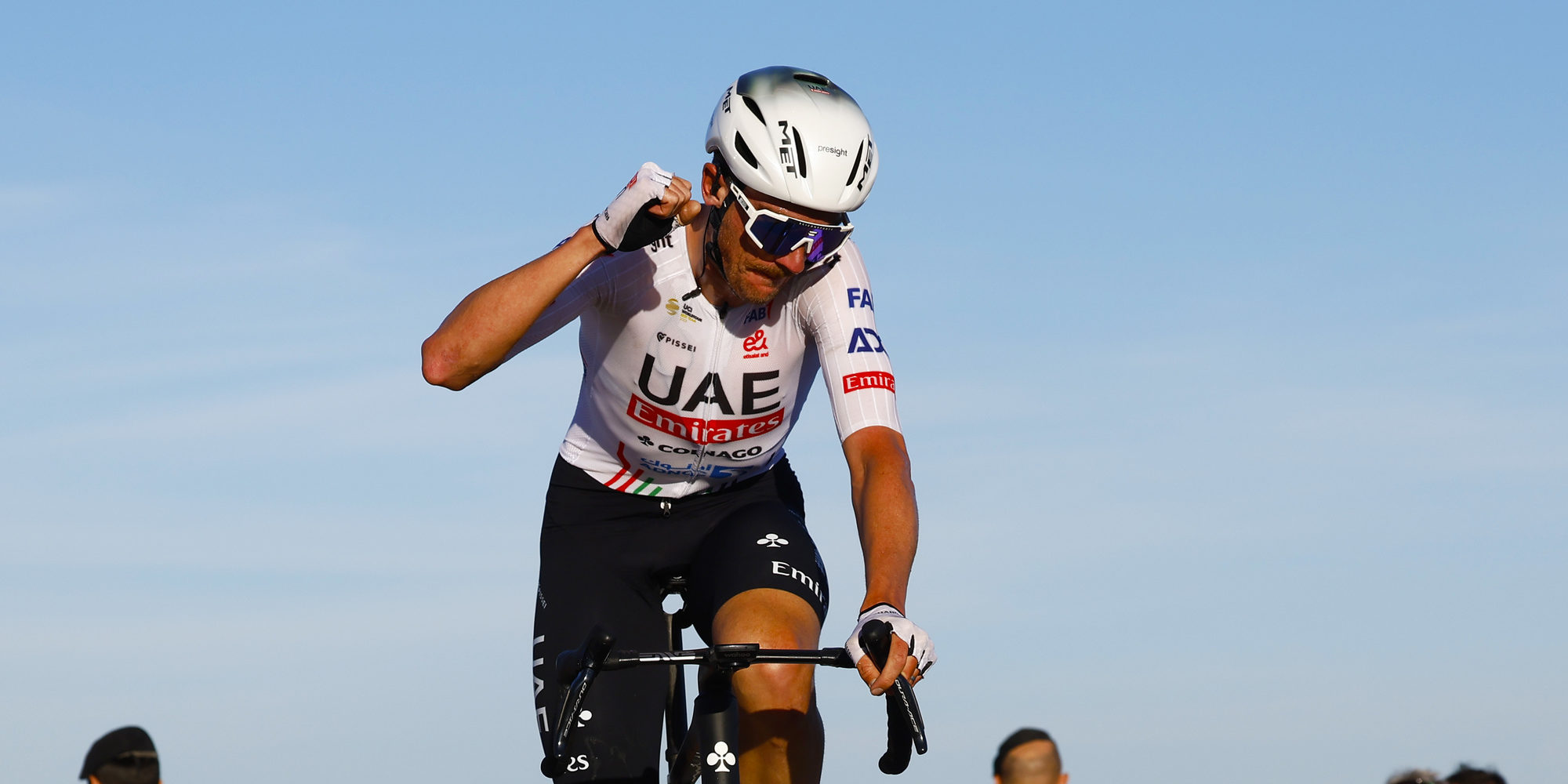
Introduction
Brandon McNulty, 27, a cornerstone of UAE Team Emirates, is a genuine endurance lab rat who publishes 100 % of his Strava rides—.fit files included. Such transparency is a rarity: barely a handful of WorldTour pros let the public peek at raw numbers like normalized power, power-to-heart-rate ratios, or HRV trends.
For this deep-dive we collected 119 rides spanning November 2023 → January 2024 (winter 1) and 116 rides from November 2024 → February 2025 (winter 2). Beyond mere watt voyeurism, our goal is to understand why and howUAE structures the work of this 72-kg climber-rouleur: proportion of volume, when to introduce strength, how much VO₂, and how to time recovery. We cross-reference each field observation with peer-reviewed research (Seiler 2010; San Millán 2019; Clark et al. 2022) to extract universal principles you can apply immediately—with proportionate intensities, of course.
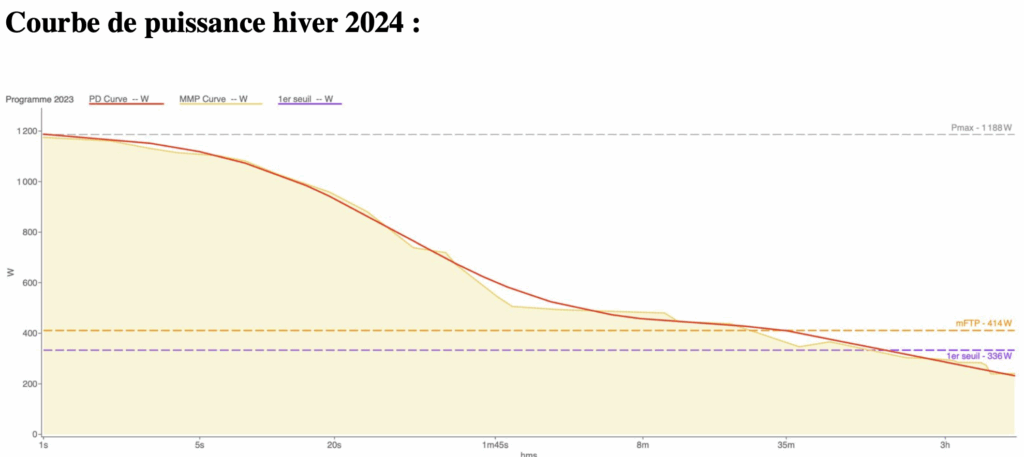
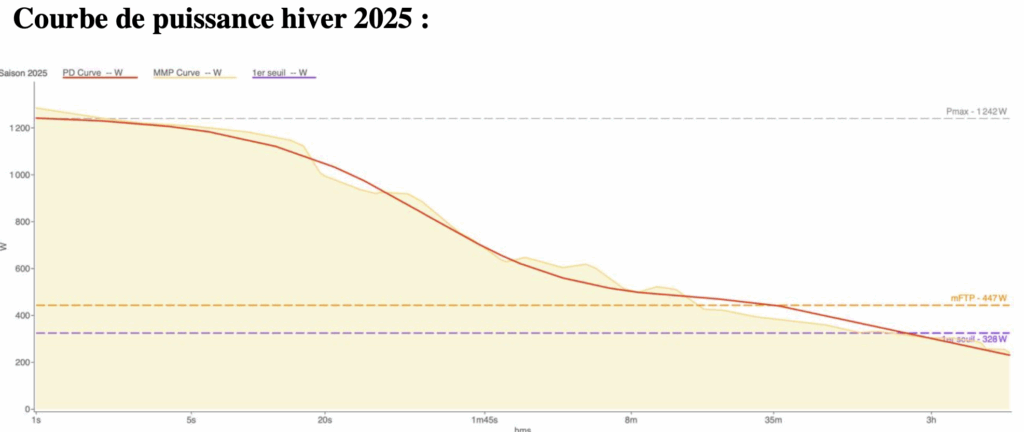
1. The Off-Season Break: 7 active weeks vs 6 reversed weeks
Observation. After the 2023 season McNulty logs 7 weeks off: 5 semi-active (commuting, easy gravel) plus 2 complete OFF. The following winter he flips the script: 2 weeks fully OFF (zero bike, short hikes) followed by an ultra-light 4-week ramp at < 8 h, mostly Zone 1.
Why? HRV data published in Frontiers in Physiology (Clark 2022) show a cumulative ≈ 10 % drop over a WorldTour season. A full stop first “reboots” the autonomic nervous system. Then 3-4 weeks of low-intensity long duration(LILD) reactivate enzymes such as citrate synthase and trigger capillarization without pushing cortisol sky-high.
Amateur takeaway. Reserve 1-2 weeks completely OFF (or fun cross-training) right after your A-race. Instead of jumping back into short intervals, spend 3 weeks rebuilding easy mileage—even if you feel like you’re losing intensity.
2. Return to Training: High Load from Week 1
Observation. Unlike the classic “pyramid” rebuild, McNulty jumps straight to 19-21 h and already pedals 250-280 Waverage in week 1.
Analysis. With ~15 years of aerobic base, 250 W (≈ 65 % VO₂max for him) is metabolically cheap: blood glucose stays stable, and continuous glycogen telemetry (Nix Biosensors) shows ~45 % reserve after 4 h. Mujika (2020) found elite cyclists can safely resume at 80 % of habitual load provided intensity stays below LT1.
Amateur takeaway. If your FTP drops > 5 % after a break, limit volume increases to +10 % per week and watch two simple flags: RPE < 5/10 and cardiac drift < 5 bpm between the first and second hour of a long ride.
3. Zone 2: The Immovable Foundation
Numbers. Across the 10 core weeks, 80 % of McNulty’s time is spent at 250-280 W—75-83 % of LT1. Even VO₂ recoveries sit here, keeping weekly mean power > 250 W outside racing.
Physiology. Zone 2 corresponds to ~2 mmol/L blood lactate. San Millán & Brooks (2019) demonstrated that at this intensity fat oxidation peaks around 0.6 g/min, maximising PGC-1α signalling for mitochondrial biogenesis. Simultaneously the mechanical tension (250-280 W for 4-5 h) stimulates actin/myosin synthesis without excessive catabolism.
Tip. Replace the outdated “Endurance = 65 % HRmax” rule with a target of ~75-80 % of LT1. Measure lactate or use a talk test: if you can talk but not sing, you’re close.
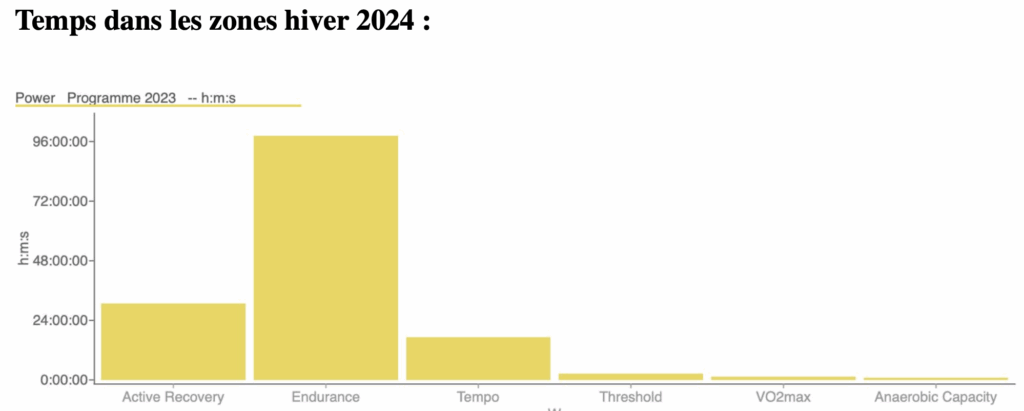
4. Targeted LT1: 13 Sessions in 2025
Numbers. Winter 1 featured 6 workouts of 3×45′ @ 310 W; winter 2 jumps to 13, peaking at 3×1 h @ 320-330 W. UAE coach Javier Sanso states the goal is “push LT1 to 85 % FTP to improve lactate clearance in-race.”
Science frame. Faude (2015) showed that time at 88-92 % FTP spikes intramuscular carnosine, buffering hydrogen ions. A higher LT1 means McNulty generates less lactate when riding at 300-320 W in the final kilometers.
Prescription. Start with 2×20′ @ 95 % LT1 (RPE 6/10). Add 5′ per rep weekly up to 3×40′. Monitor lactate drift (< 0.4 mmol/L) and keep blood glucose > 75 mg/dL.
5. Low-Cadence Strength: The Signature Block
Numbers. Weekly 5×10′ at 50-60 RPM, 340-360 W, usually at the very start of a long ride. Example 5 Dec 2023: 5×10′ strength + 63′ steady @ 321 W.
Why? Andersen (2019) found that high torque at low cadence recruits type IIa fibers aerobically without massive glycogen stress. On the road that translates into torque endurance on variable-gradient climbs.
Amateur drill. On rolling terrain pick a heavy gear (60-65 RPM) and hold it 6-8′ @ 90 % FTP. Rest 5′ in Z1. Cap these sessions at 20-25 % of your weekly strength volume to avoid low-back issues.
6. High Intensity: Minimalist yet Surgical
Numbers. Only 4-5 VO₂ workouts: 30/30, 40/20, 1/1, or 5×10′ @ 455 W (~120 % FTP), scheduled 6 ↘ 4 weeks before the Volta a la Comunitat Valenciana.
Rationale. Seiler’s 80/20 pyramid becomes 90/7/3 (Zone 1/2/3) in UAE’s winter. The tiny VO₂ dose is offset by very high power targets (> 6.3 W/kg) and low density (e.g., 5×30/30 + 15′ Z1). This prevents chronic glycogen depletion yet primes β-adrenergic receptors for intensity spikes.
Tip. Two weeks of 30/30 @ 120 % FTP can bump VO₂max by 4-5 %. Double the recovery (30/30 → 30/60) if you’re new to it.
7. Volume Increase as Lever #1
Numbers. 17 h 20 ➜ 21 h 19 per week; 8 weeks > 20 h; 13 rides > 5 h in 2025 vs 1 in 2024. Result: EF +15‑20 W at identical HR.
Explanation. More hours = more mitochondria. Robinson et al. (2023) calculated a 20 % increase in > 3 h time doubles mitochondrial‑protein synthesis (MPS) compared with equivalent intensity work. McNulty grows the cake (capacity) before adding the icing (intensity).
Practical model. 1) First stabilise 8‑10 h/week. 2) Add +1 h every 4 weeks via easy rides. 3) Insert an overload block: +35‑40 % volume for 7 days, then 4 days OFF.
8. Recovery Management
Numbers. Winter 1: 1 OFF day + 1 Zone 1 spin per week; Winter 2: 18 consecutive days without OFF but 2×Zone 1 spins.
Neuro‑hormonal. Metrics (HRV, POMS score) show McNulty tolerates long blocks better than frequent OFF days. Caffeine is capped at < 200 mg/day, boosting deep‑sleep quality.
Amateur tools. Track a 7‑day rolling HRV average. If it drops > 10 % below baseline for 3+ days, schedule an OFF day or a 45′ Z1 recovery ride.
9. Efficiency Factor: The King Metric
Numbers. EF = NP ÷ HR. McNulty improves from 2.58 W/bpm to 2.78 W/bpm, meaning he can push 20 W more before hitting the same HR.
Why not FTP? FTP fluctuates ±5 % with freshness. EF is taken on a reference Z2 ride (3 h at 75 % LT1) and reflects whole‑system economy (cardio + muscular).
Protocol. Choose a 2‑3 h loop, ride strict Z2, log NP and average HR. If EF flat‑lines for six weeks, your training stress is no longer sufficient.
10. Synthesis: 7 Actionable Principles
- Build a huge Zone 2 base (70‑80 % of annual time).
- Long LT1 blocks: twice weekly in winter, once in‑season.
- Low‑cadence strength for climbing economy.
- Micro‑dosed VO₂, placed −6 → −2 weeks before the goal event.
- Progressive volume: +5‑8 % per month, overload then rest.
- Flexible recovery: HRV and feeling over rigid calendars.
- Patience: repeat the same scheme 2‑3 years to stack adaptations.
Conclusion
Copying a pro’s watts is illusory; copying his logic pays off. McNulty’s numbers prove that a pyramid with 80 % work below LT1, a diligently trained LT1, and steadily rising volume yields durable progress without over‑training. In a world enthralled by 4×4‑minute “miracle” workouts, the real magic remains consistency. Build, measure, adjust—and repeat.
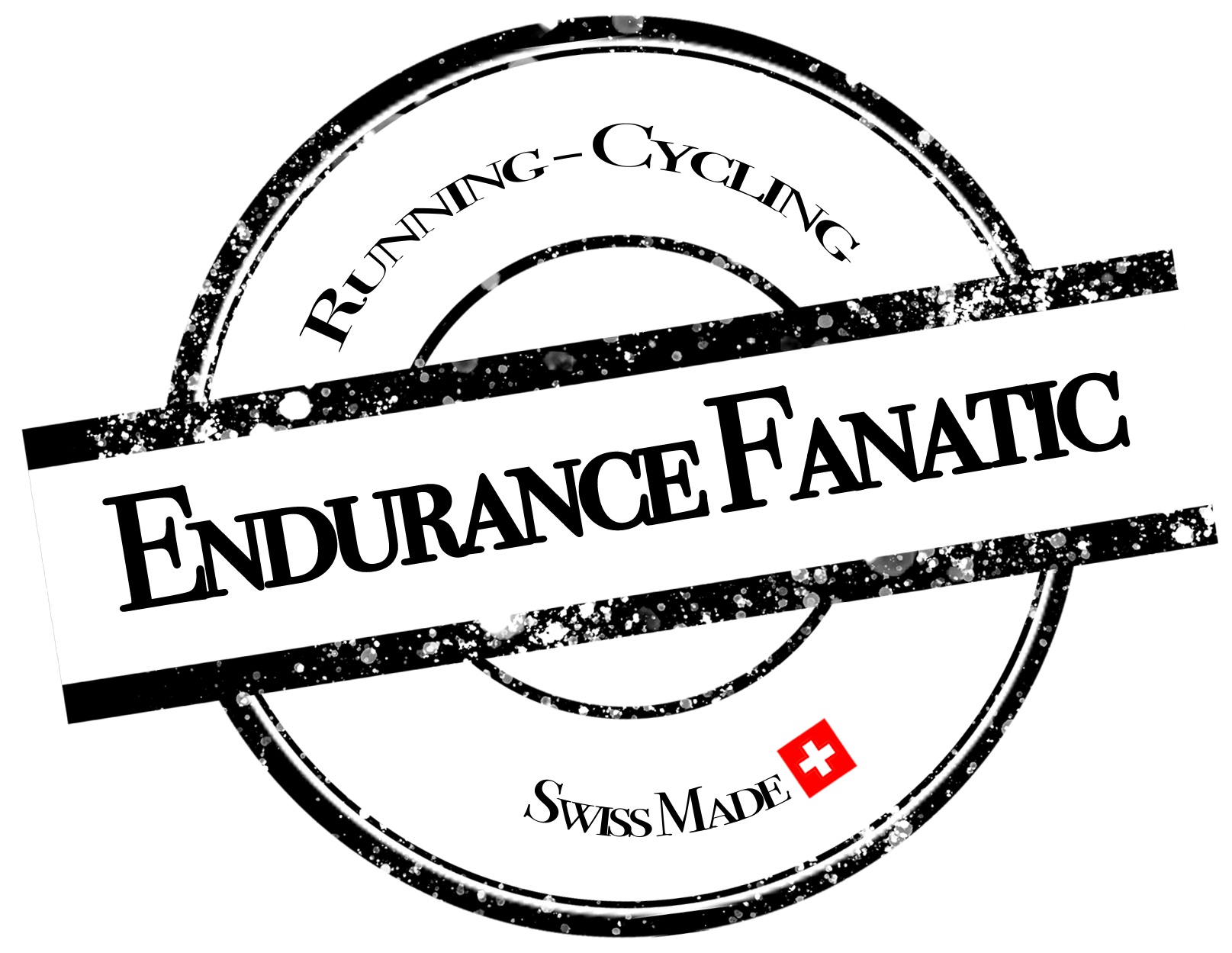
Laisser un commentaire